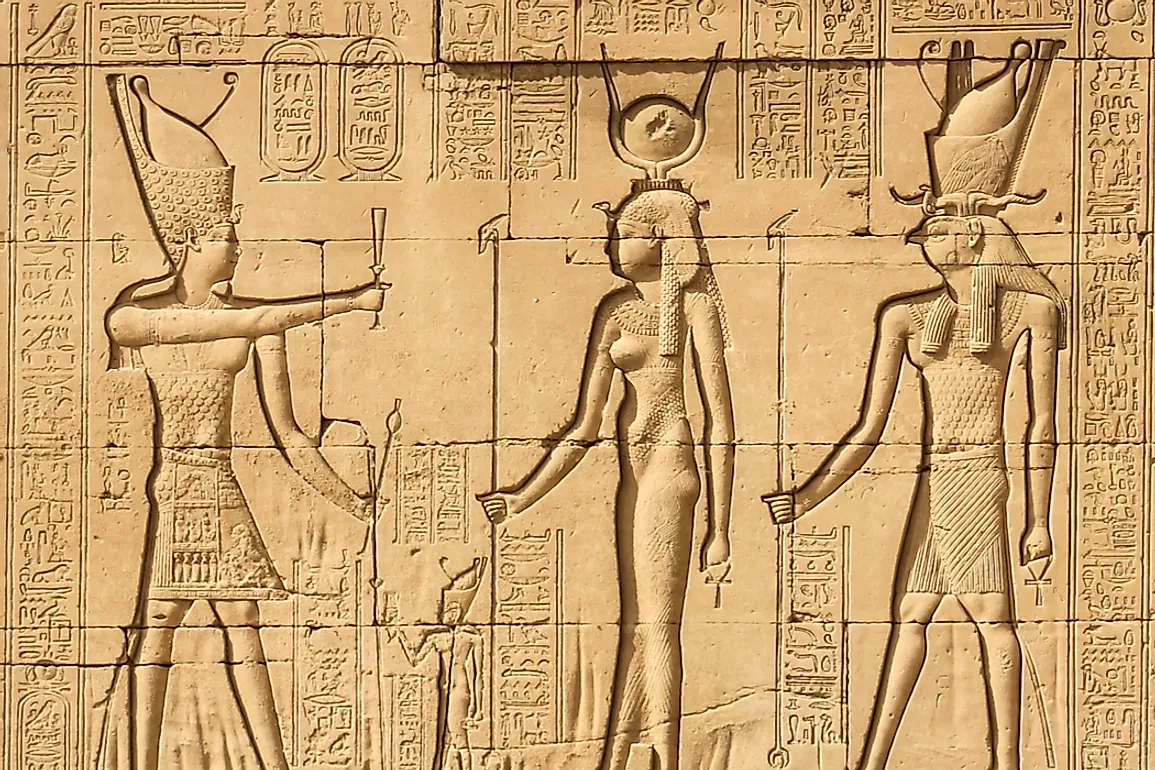Cleopatra - Famous Figures in History

Known to the many as Cleopatra, Cleopatra VII Philopator was the last ruler of the Ptolemaic Egyptian Kingdom who was survived by her son as the pharaoh. Cleopatra belonged to the Ptolemaic family, a Greek family who originated from Macedonia, which ruled over Egypt during the Hellenistic era right after the death of Alexander the Great. Ptolemies conversed in Greek throughout their reign, and they refused to learn the late Egyptian language, but Cleopatra learned the Egyptian language and always represented herself as the reincarnated goddess Isis.
Accession to the Throne of Egypt
Although the identity of her mother is unknown, her father, Ptolemy XII, was the direct descendant of one of Alexander the Great's generals, Ptolemy I Soter. Ptolemy is one of the Diadochi who succeeded Macedonia after Alexander the Great died and he founded a dynasty which ruled Egypt for three centuries. Political instability and centralization of power resulted in an uprising making the reign of Ptolemy XII the hardest reign in Egypt. When her father visited Rome, Cleopatra VI took over power but died shortly after, when Berenice IV allegedly poisoned her. Bernice ruled until 55 BCE when Ptolemy XII returned to Egypt with the Roman army and took over. Bernice was executed, and this resulted in Cleopatra VII becoming the joint regent and deputy to her father at age 14.
After her father died, Cleopatra then 18 years old, together with her brother Ptolemy XIII became joint monarchs. As accustomed, she got married to her brother, but she made it clear that she wanted to rule alone. Therefore in 51 BCE, Cleopatra dropped the name of her brother from official documents and became the sole ruler with her face appearing on coins which was against the Ptolemaic traditions. She later got into a severe conflict with the Roman troop which was left behind to protect her father, and in 49 BCE, her short reign ended with her fleeing.
Cleopatra and Caesar
In the summer of the 48 BCE, the Roman general Julius Caesar found himself in the middle of their feud and tried to reconcile the siblings while chasing Pompey who was killed on the orders of Ptolemy XIII. Caesar was furious. Caesar decided to reunite the siblings, but Ptolemy XIII sent his army to block Cleopatra from coming home. Aware that Caesar could aid her back to power she convinced her servant to wrap her in a carpet and present it to Caesar. Cleopatra became Caesar’s mistress and gave him a son called Caesarion, and this forced Caesar to abandon his plans of taking over Egypt and instead backed Cleopatra’s claim. Ptolemy III lost the siege of Alexandria to Caesar who reinstated Cleopatra to the throne alongside her younger brother.
Cleopatra tried to make Caesar declare her son the next ruler of Rome, but he refused instead naming Octavian his great-nephew as his successor, and he even denied the fact that Caesarion was his son. Caesar was killed in 44 BCE and with Caesar gone, Cleopatra killed her brother Ptolemy XIV to prevent him from challenging Caesarion’s throne succession. To solidify Caesarion as the next ruler of Egypt, she dispatched her sister Arsinoe.
Cleopatra and Marc Anthony
In 41 BCE, Marc Anthony the ruler after Caesar summoned her to Rome to respond to questions about her loyalty, but her beauty captivated him. Anthony started an affair with Cleopatra which resulted in her giving him twins. Cleopatra then requested Anthony to send troops to kill her sister who had been banished.
To help Anthony defeat Octavian, she financed the war between him and Octavian at Actium, but the war proved costly, so Anthony and Cleopatra went back to their kingdom in Egypt. Anthony later returned to the battleground but he was fallaciously informed of Cleopatra’s demise. Upon hearing this news Anthony committed suicide. Cleopatra followed Anthony by ending her life by an asp bite on 30 BCE.











